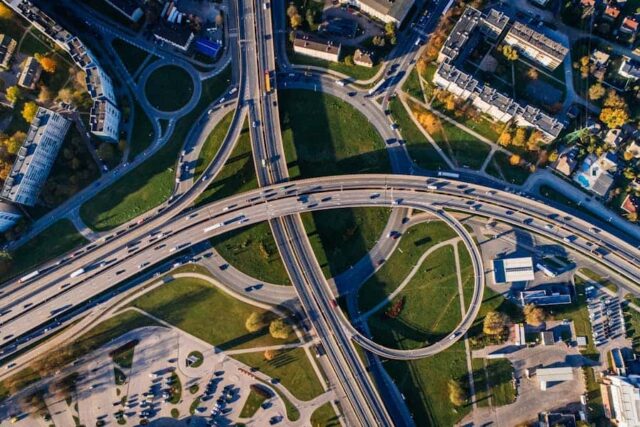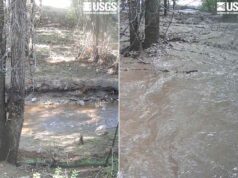In the evolving landscape of infrastructure maintenance, integrating advanced technologies has significantly enhanced the efficiency and safety of structural repairs, particularly in bridge maintenance. Among these technological advancements, autonomous vehicles, especially those equipped for Condition-Based Maintenance Drone operations, have emerged as pivotal tools. These innovations offer unprecedented capabilities in assessing and repairing bridge structures, providing precision and reliability. This article looks at the transformative role that autonomous vehicles play in bridge structural repairs, exploring their impact through various application dimensions.
Enhanced Inspection and Diagnosis
With the advent of autonomous vehicles, particularly drones, the bridge inspection process has been significantly elevated. These vehicles utilize advanced imaging technologies, such as LiDAR and thermal imaging, to capture detailed structural details that are invisible to the eye. This capability not only enhances the detection of potential issues but also facilitates a comprehensive analysis of the bridge’s condition, including areas that are traditionally challenging to assess. Over time, the accumulation and analysis of this data support a proactive maintenance approach, allowing for identifying deterioration trends and implementing preventative measures before significant damage occurs.
Precision in Structural Repairs
The application of autonomous vehicles in executing structural repairs introduces previously unattainable precision. Equipped with advanced navigation systems, these vehicles can accurately position themselves to apply repairs with minimal deviation, ensuring that materials are utilized effectively and waste is minimized. This precision is critical in tasks such as crack filling, where the exact application of sealing agents can significantly impact the repair’s longevity. Furthermore, the ability to consistently replicate repair processes across different parts of the bridge ensures uniform quality, contributing to the overall structural integrity of the bridge.
Safety Enhancements in Repair Operations
The integration of autonomous vehicles into bridge repair operations significantly mitigates safety risks. These vehicles can perform inspections and repairs in conditions that pose significant risks to human workers, such as extreme heights, over water, or in confined spaces. By taking humans out of harm’s way, the risk of workplace accidents is drastically reduced. This not only ensures the safety of the maintenance crew but also reduces the liability for construction and maintenance firms. Moreover, autonomous vehicles can be deployed quickly in response to sudden structural issues, offering a rapid assessment and stabilization capability that can be crucial in emergencies.
Cost-Effectiveness and Efficiency
The efficiency brought by autonomous vehicles in bridge maintenance operations directly translates to cost savings. The rapid and accurate data collection reduces the labour hours needed for manual inspections, while the precision in repairs ensures that materials are used efficiently, decreasing the overall material costs. Additionally, the ability to conduct maintenance work without significant traffic disruptions minimizes the economic impact on the surrounding area. The long-term benefits include extending the bridge’s lifespan through timely and effective maintenance and reducing the need for extensive repairs or replacement, which would incur much higher costs.
Future Prospects and Technological Integration
The future of bridge maintenance is set to be transformed further by the integration of emerging technologies with autonomous vehicles. The potential for drones and robotic vehicles to identify structural issues and predict future deterioration through artificial intelligence and data analytics represents a significant leap forward. This predictive maintenance approach could enable the scheduling of repairs before damage escalates, optimizing maintenance budgets and further extending the lifespan of bridge structures. Additionally, exploring new materials and repair techniques compatible with autonomous application methods could enhance repair durability and efficiency.
Incorporating Environmental Monitoring for Comprehensive Bridge Health Assessment
An elaborate point to add to this article would be the role of autonomous vehicles in environmental monitoring around bridge structures. These vehicles can be set up with sensors to monitor environmental factors such as water levels, flow rates, and sediment accumulation affecting bridge stability. Integrating environmental monitoring into regular maintenance checks achieves a more holistic approach to bridge health assessment. This not only aids in the direct maintenance of the bridge but also the management of its surrounding environment, ensuring that both are preserved in a way that promotes long-term stability and safety. This comprehensive approach underscores the evolving role of autonomous vehicles in maintaining and enhancing the resilience of bridge infrastructures against environmental challenges.
Conclusion
The role of autonomous vehicles, highlighted by the capabilities of tools like Condition-Based Maintenance Drone in bridge structural repairs, is undeniably transformative. These technologies enhance the safety and precision of maintenance operations and bring about significant efficiencies and cost savings. As the integration of autonomous vehicles continues to evolve, the prospects for future advancements hold the promise of further elevating the standards of bridge maintenance. The continued innovation in this field is crucial for ensuring the resilience and reliability of bridge infrastructures, safeguarding their role in facilitating transportation and commerce in societies worldwide.













